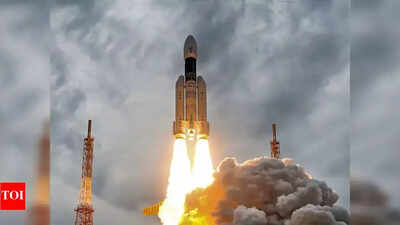The year 2025 marks the dawn of a transformative era in space exploration, with an impressive array of missions set to enhance our understanding of the Moon, Mars, and the vast expanse beyond. Spearheaded by leading space agencies like NASA, ISRO, ESA, and JAXA, as well as innovative private companies, these endeavors promise groundbreaking scientific advancements and pave the way for future human exploration and technological breakthroughs. From crewed lunar missions to robotic explorers venturing to distant moons, here's a glimpse into the top 10 space missions to anticipate in the coming years.

Launch Date: 2026
Destination: Moon
Objective: Deploy scientific instruments and rovers to investigate lunar geology and evaluate technologies for future Artemis missions.
Overview: The IM-3 mission is an integral component of NASA's Commercial Lunar Payload Services (CLPS) program, aimed at establishing a sustainable human presence on the Moon. It will transport advanced instruments to analyze the lunar surface, including rovers designed to navigate and examine the terrain. Beyond scientific exploration, IM-3 will assess novel landing technologies and autonomous systems crucial for upcoming crewed Artemis missions. A successful mission will foster confidence in commercial partnerships supporting lunar exploration efforts.
Launch Date: December 2025
Destination: Mars Orbit
Objective: Analyze the plasma environment and magnetic fields of Mars to gain insights into atmospheric loss.
Overview: ESCAPADE comprises two compact satellites, "Blue" and "Gold," orbiting Mars at varying altitudes to provide a comprehensive understanding of how solar wind erodes the Martian atmosphere. This process holds the key to unraveling why Mars lost much of its atmosphere and surface water, transforming from a potentially habitable planet into the arid desert we observe today. The mission's data will refine models of planetary atmospheres and contribute to assessing Mars' past habitability.
Launch Date: 2025
Destination: Earth Orbit
Objective: Monitor changes on Earth's surface with high precision to study natural disasters and environmental shifts.
Overview: NISAR represents a groundbreaking collaboration between NASA and ISRO, equipped with dual-frequency radar capable of penetrating clouds and darkness to generate detailed maps of Earth's surface. It will track land deformation caused by earthquakes and volcanic activity, monitor deforestation, and measure ice sheet dynamics. This mission will provide timely data to enhance disaster response and deepen understanding of climate change impacts, making it an indispensable resource for scientists and policymakers globally.
Launch Date: April 2026
Destination: Lunar Orbit
Objective: Conduct the inaugural crewed mission of the Artemis program to test spacecraft systems in lunar orbit.
Overview: Artemis II signifies NASA's return to crewed lunar missions after a long hiatus. Four astronauts will orbit the Moon aboard the Orion spacecraft, launched by the powerful Space Launch System (SLS). This 10-day mission will evaluate life support, navigation, and communication systems in the deep space environment, ensuring readiness for the subsequent Artemis III landing mission. Artemis II is a pivotal step toward establishing a long-term human presence on the Moon.
Launch Date: 2025 (Test Flights)
Destination: Low Earth Orbit
Objective: Validate safety, life support, and avionics systems for India’s first crewed spaceflight.
Overview: Gaganyaan-2 is an integral part of India's ambitious human spaceflight program. The uncrewed test flights will rigorously assess the spacecraft's critical systems, including environmental controls and emergency procedures. These tests are essential to ensure astronaut safety for the planned Gaganyaan-3 mission. Success will position India among the select few nations capable of independently sending humans to space, marking a significant milestone in its space capabilities.
Launch Date: July 2028
Destination: Titan (Saturn’s Moon)
Objective: Explore Titan’s organic-rich surface and study prebiotic chemistry.
Overview: Dragonfly is a unique rotorcraft lander designed to traverse Titan’s diverse and complex terrain. Titan’s thick atmosphere and organic molecules make it one of the most intriguing places to study prebiotic chemistry and the potential for life beyond Earth. Dragonfly will analyze surface composition, weather patterns, and chemical processes, providing unprecedented insight into how life’s building blocks might form in environments vastly different from Earth.
Launch Date: September 2026
Destination: Phobos (Mars’ Moon)
Objective: Explore Mars’ moons and return samples from Phobos to Earth.
Overview: JAXA’s MMX mission aims to solve the mystery of Mars’ moons’ origins by collecting and returning samples from Phobos. The mission will also conduct detailed observations of Deimos. Understanding whether these moons are captured asteroids or formed from Mars itself will shed light on the history of the Martian system and the early solar system. The sample return is a complex feat that will provide invaluable material for laboratory analysis on Earth.
Launch Date: 2027
Destination: Low Earth Orbit
Objective: Conduct reusable microgravity experiments in orbit.
Overview: ESA’s Space Rider is a reusable, autonomous spaceplane designed to carry payloads for scientific and technological experiments in microgravity. It will enable longer-duration studies on biological processes, materials science, and plant growth, helping researchers understand how space conditions affect various systems. Its reusability lowers costs and increases access to space for European researchers and industry.
Launch Date: April 2025
Destination: Earth Orbit
Objective: Conduct an all-sky infrared survey to study galaxy evolution, cosmic inflation, and dark energy.
Overview: SPHEREx will map the entire sky in infrared light, providing a wealth of data about the universe’s structure and history. It will investigate the origins of galaxies, measure cosmic inflation’s fingerprints, and explore the mysterious dark energy driving the universe’s accelerated expansion. This mission promises to answer fundamental questions about the cosmos with a new level of precision.
Launch Date: 2028
Destination: Venus
Objective: Map Venus’ surface geology to understand its tectonics and volcanic history.
Overview: VERITAS will produce high-resolution maps of Venus’ surface using radar to penetrate its thick clouds. By studying Venus’ tectonic activity and volcanic processes, the mission seeks to explain why Venus evolved so differently from Earth despite their similar size and composition. VERITAS will also help assess Venus’ potential for past habitability and provide context for comparative planetology.
These missions represent the cutting edge of space exploration, combining human spaceflight, robotic explorers, and Earth observation to expand our knowledge of the solar system and our home planet. As they launch and unfold over the next decade, they will inspire new discoveries and redefine humanity’s place in the cosmos.
Newer articles
 Samsung Galaxy A35 5G and A55 5G: Full Pricing and Specs Revealed
Samsung Galaxy A35 5G and A55 5G: Full Pricing and Specs Revealed
 Warning Signs: 5 Clues Your Body May Be Signaling Prediabetes
Warning Signs: 5 Clues Your Body May Be Signaling Prediabetes
 SA20 Teams Allowed Up to Six Player Retentions, Enhanced by New RTM Card and Increased Salary Cap for Upcoming Auction
SA20 Teams Allowed Up to Six Player Retentions, Enhanced by New RTM Card and Increased Salary Cap for Upcoming Auction
 Brain's Eye View: Study Shows We See the World 15 Seconds in the Past
OR
The 15-Second Delay: How Your Brain Creates a Seamless, But Delayed, Reality
Brain's Eye View: Study Shows We See the World 15 Seconds in the Past
OR
The 15-Second Delay: How Your Brain Creates a Seamless, But Delayed, Reality
 Expert Tips to Help Kids Sharpen Focus and Combat Distractions
Expert Tips to Help Kids Sharpen Focus and Combat Distractions
 Cervical Cancer: Don't Ignore These 5 Subtle Warning Signs
Cervical Cancer: Don't Ignore These 5 Subtle Warning Signs
 Science-Backed: 5 Simple Daily Habits for a Healthier Heart
Science-Backed: 5 Simple Daily Habits for a Healthier Heart
 Shimron Hetmyer's Last-Gasp Six Stuns MI New York, Orcas Complete Record MLC Chase
Shimron Hetmyer's Last-Gasp Six Stuns MI New York, Orcas Complete Record MLC Chase
 Oral Cancer: Spotting the Signs, Understanding the Risks, and Why Early Detection is Critical
Oral Cancer: Spotting the Signs, Understanding the Risks, and Why Early Detection is Critical
 Infrequent Bowel Movements: When Is It Time to Worry? A Guide to Healthy Digestion
Infrequent Bowel Movements: When Is It Time to Worry? A Guide to Healthy Digestion